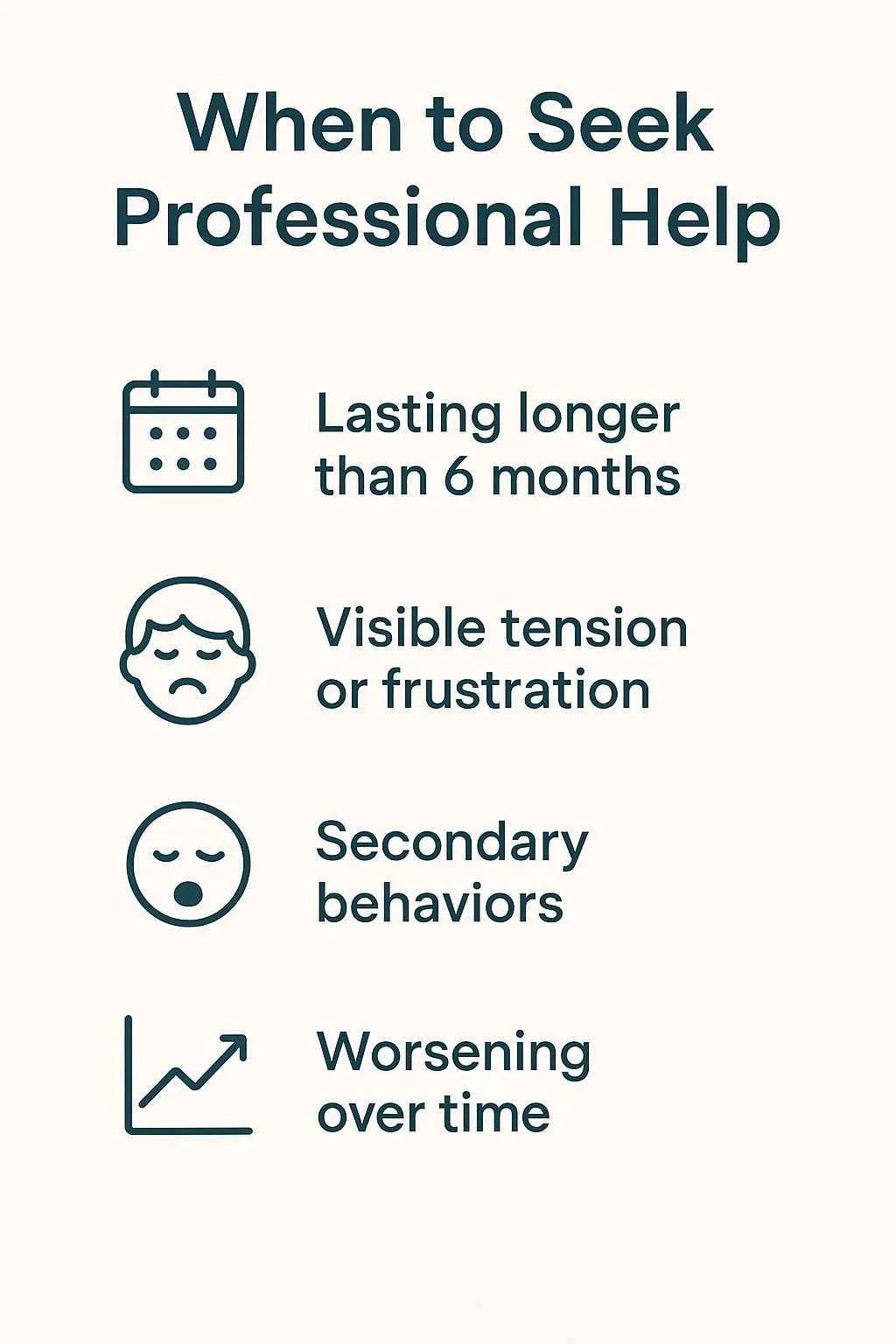Early Childhood Stuttering: Setting a Supportive Environment
Early childhood stuttering is a common experience, and many children go through a stage of disfluency as their language skills expand. Most toddlers repeat sounds, phrases, or certain words when they are excited, tired, or trying to keep up with rapid thoughts.
For some children, these typical disfluencies fade with time, while others show signs of fluency disorders that may need closer attention. Parents often feel worried when they hear their child’s stuttering, but knowing that speech language pathologists regularly support children who stutter can bring reassurance.
Key Takeaways:
Early onset: Stuttering often begins between ages two and five during a critical period of speech and language development.
Types of stuttering: The main types in children include repetitions, prolongations, and blocks.
Potential recovery: Many children outgrow stuttering, but early support can help reduce frustration and strengthen communication skills.
Supportive environment: A calm, patient home setting helps children feel more comfortable and confident when speaking.
Understanding Early Childhood Stuttering
Risk Factors and the Role of the Environment
Practical Ways to Create a Supportive Environment at Home
When to Seek Professional Support
How Speech Therapy Can Help Children Who Stutter
Frequently Asked Questions About Childhood Stuttering
How Connected Speech Pathology Can Help Your Child's Stuttering
Understanding Early Childhood Stuttering
Stuttering in toddlers and preschoolers often appears as pauses, phrase repetitions, stretching out certain sounds, or starting a word and then stopping. These moments can stand out to family members, especially if they seem to appear suddenly during everyday conversation.
These patterns sometimes emerge during periods of rapid language development, when a child’s speech and language skills are growing quickly. As they learn new words and more complex sentences, the demand on their language processing system increases. This can make speech fluency harder to maintain, even in children who are otherwise keeping pace with their same-age peers.
It is crucial for parents and caregivers to remember that a child’s stuttering is not caused by anything they did or did not do. Most children experience typical disfluencies at some point, and many children move past them naturally.
Risk Factors and the Role of the Environment
Some children are more likely to have stuttering that continues beyond early childhood. Risk factors include:
• Family history of stuttering: Children with relatives who stutter are more likely to experience it.
• Gender: Boys are diagnosed with stuttering more often than girls.
• Co-occurring speech or language difficulties: Children who also have limited vocabulary, delayed sentences, or speech sound errors face an increased risk.
• Persistence beyond age four: Stuttering that lasts more than twelve months or continues past age four is more likely to need support.
The environment shapes how children experience stuttering. While parents and caregivers do not cause stuttering, daily interactions can either reduce or increase the pressure a child feels when speaking.
Supportive communication, such as slowing your own speech, waiting patiently, and showing interest in what a child says instead of how fluently they say it, creates space for easier talking.
In contrast, frequent corrections, interruptions, or rushing through conversations can add stress that makes stuttering more noticeable.
Practical Ways to Create a Supportive Environment at Home
A supportive environment helps children who stutter feel safe and confident as their speech and language skills develop. Family members play a key role by modeling slower rates of speaking, keeping eye contact, and giving extra time for a child to finish their words.
Simple adjustments, such as pausing more often in conversation or focusing on the child's message rather than their fluency, can reduce pressure and encourage more relaxed talking. Here are some tips:
Give your child plenty of time to speak without interruptions.
Reduce background noise and distractions during conversations.
Use positive body language, eye contact, and a warm tone to show you are listening.
Keep daily communication light, fun, and pressure-free.
These simple adjustments create a calmer space for talking, which helps children who stutter feel heard and understood.
When to Seek Professional Support
Parents can look for specific signs that suggest professional help may be needed. Reaching out to a speech-language pathologist is a good idea if:
The stuttering has lasted longer than 6 months.
The child exhibits visible signs of tension, frustration, or avoids certain words or speaking situations.
Secondary behaviors appear, like eye blinking, rapid rate of speech, facial movements, or long pauses.
Stuttering seems to increase instead of improve over time.
Speech language pathologists can evaluate your child’s fluency and provide strategies that fit their age and speaking needs. Early intervention is significant for children with added risk factors like language disorders or learning disabilities.
How Speech Therapy Can Help Children Who Stutter
Speech therapy provides guidance and support for both young children and their families. Speech language pathologists help parents respond to a child’s disfluencies with patience and strategies that lower pressure during everyday conversations.
For younger children, therapy for stuttering often focuses on indirect treatment approaches that involve changing the communication environment at home. These adjustments make the child's speech feel easier and give children more space to develop fluent speech.
For older children, speech therapy may include more direct approaches that build awareness of speaking patterns and practice using slower rates, smoother transitions, and stronger communication skills in real situations.
Working with a speech language pathologist also gives children the chance to talk about how stuttering affects them emotionally and socially, especially when comparing themselves to other children. This helps reduce shame and builds confidence in both speech and self-expression.
Through early treatment and continued support, most children improve their fluency and develop skills that carry into school, friendships, and beyond.
Speech Therapy for Kids
Check out this blog about speech therapy for kids for more information!
Frequently Asked Questions About Childhood Stuttering
1. What are the different types of stuttering in children?
Children can experience three main types of stuttering: repetitions, prolongations, and blocks. Repetitions involve repeating sounds, syllables, or words, such as “ba-ba-ball.” Prolongations happen when a child stretches a sound, like “ssssun.” Blocks occur when a child tries to speak, but no sound comes out, even though they appear to be trying.
2. Is stuttering considered a fluency disorder?
Stuttering is classified as a fluency disorder because it affects the smooth, natural flow of speech. It is characterized by interruptions in rhythm, such as repeating sounds, stretching words, or pausing unexpectedly before speaking.
3. Can stuttering go away on its own?
Many children outgrow stuttering as their speech and language skills mature. For some, it lasts only a few months, while others may continue to stutter into adolescence or adulthood. Early support from a speech therapist can help reduce the risk of it persisting.
4. Does stress or family environment cause stuttering?
Stress and family environment do not cause stuttering, but they can make it more noticeable. A child who feels rushed, interrupted, or pressured to speak perfectly may stutter more often. A calm, supportive setting can help reduce tension around speaking.
How Connected Speech Pathology Can Help Your Child's Stuttering
Connected Speech Pathology provides specialized support for children who stutter by creating speech therapy plans that fit each child’s needs. We focus on helping children build confidence in speaking, while also guiding parents on how to respond in supportive ways at home.
Our speech therapists use evidence-based techniques that make speaking feel more manageable and less stressful. Sessions often include playful, engaging activities so children feel comfortable practicing new skills. Parents are part of the process, learning simple strategies to keep communication positive during daily routines.
Key ways we support families include:
Early intervention for children as young as two can help encourage smoother speech patterns.
Parent coaching that gives you tools to reduce pressure and model relaxed communication.
Individualized therapy plans that adjust to your child’s unique speaking style and goals.
Ongoing guidance so progress continues outside of therapy sessions.
Working with Connected Speech Pathology means your child gets more than direct speech support. They gain a safe, encouraging space to express themselves, and you gain a partner who helps you handle stuttering with confidence.
Summary
Early childhood stuttering is common, especially between ages two and five, when language skills are rapidly developing. While many children outgrow stuttering, some benefit from early support to build confidence and reduce frustration. Parents play an important role by creating a calm, patient environment where their child feels heard.
With the proper support, children can strengthen their communication skills and feel more confident expressing themselves.
About the Author
Allison Geller is a communication coach, speech-language pathologist, and founder of Connected Speech Pathology, an international online practice providing professional communication coaching and speech therapy for children, teens, and adults. With more than two decades of experience, she has worked in medical and educational settings, published research on aphasia, and leads a team of specialists helping clients improve skills in public speaking, vocal presence, accent clarity, articulation, language, fluency, and interpersonal communication.










